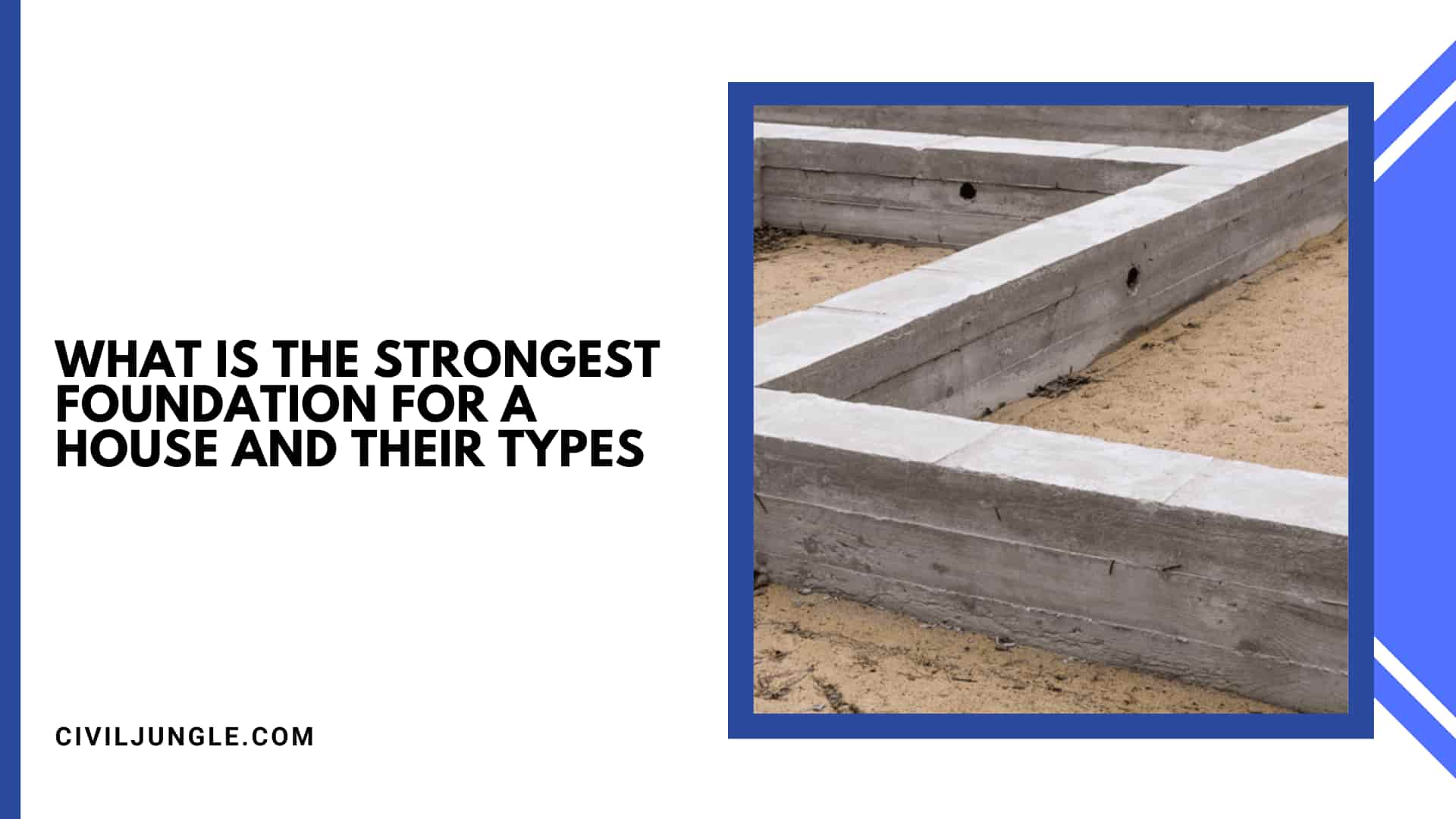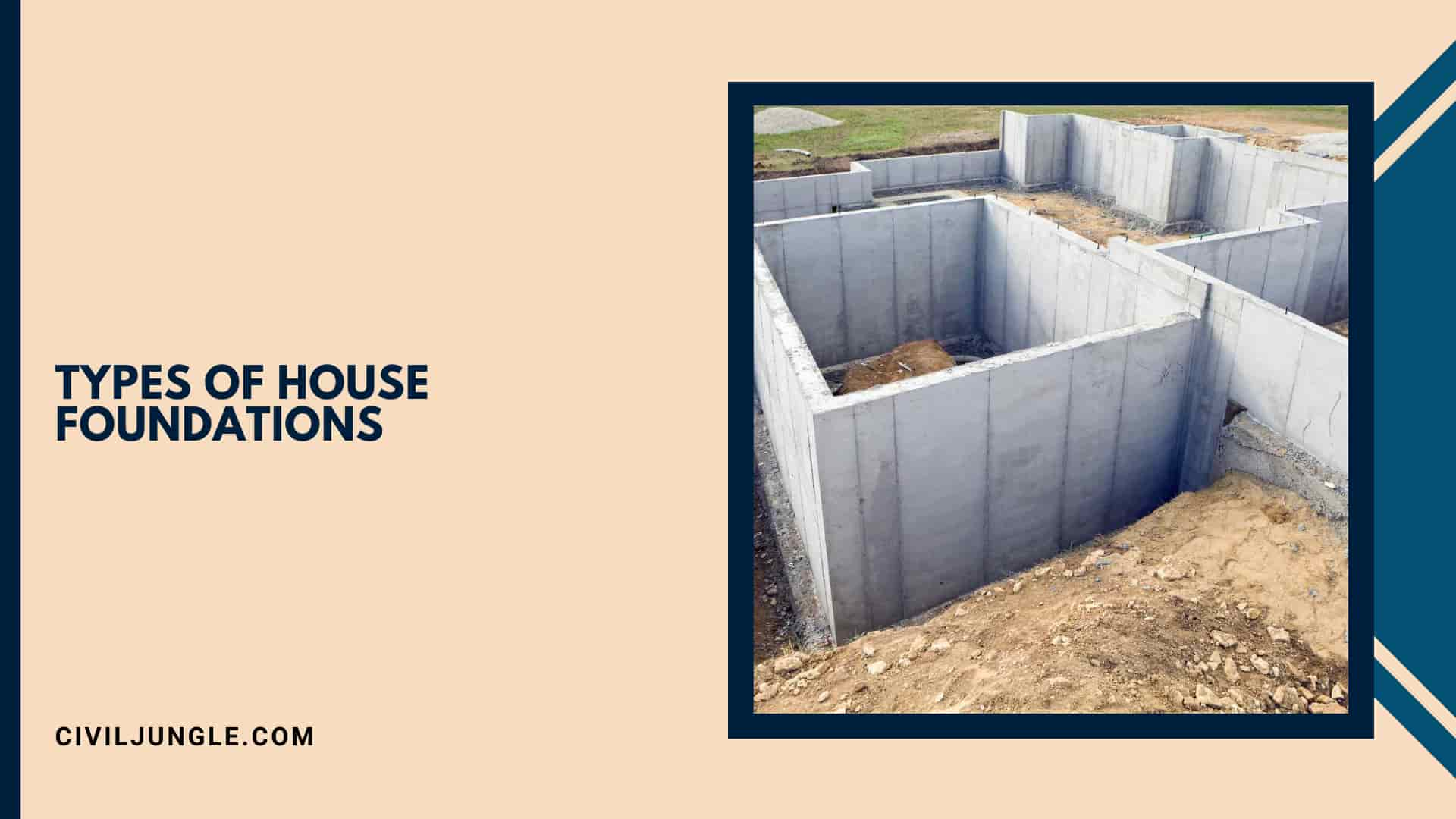Introduction of Foundation for House
Important Point
The foundation is laid in direct contact with the ground, which transmits the load coming from the structure to the ground.
Foundation is an important part of any building structure. On which the structure of the building rests. The foundation provides the base for the structure of the building.
The main points of this article are as follows,
What Is the Foundation in the Building?
The foundation is the lower part of the building structure made to transfer the load on the ground. The load of the structure of the building is transferred to the earth due to gravity by the foundation. Foundations are mainly classified into two parts as per requirement.
The main purpose of the foundation is to provide stability to the building. The foundation is designed to transfer the weight of the building structure over a large area.
Purpose of Building Foundation
- Foundations provide stability to the ground of the building structure.
- The purpose of the foundation is to support the stability of the building against various external factors. These factors include earthquakes, floods, frost heaves, tornadoes, and wind.
- The foundation transfers the weight of the structure over a large area to prevent unequal settlement of the land.
- The foundation provides a base for the construction of the building.
- A deep foundation is used to increase the stability of the structure of the building and prevent overloading.
- The foundation is designed to prevent the lateral movement of the supported structure against external factors.
Requirements of Good Foundation of Building
The following are some basic requirements of the foundation for the design and good performance.
1. Stability of the Foundation
The structure of the foundation should be such that it can withstand combined dead loads, live loads, earthquakes, and wind loads without any damage like structural damage, disintegration, and deformation, etc. of any building. And it should be designed to safely transfer this structure and external load to the ground.
Also Read: What Is Well Foundation | Component of Well Foundation
2. Sufficient Depth of the Foundation.
The foundation should take sufficient depth in the ground depending on the weight of the structure of the building so that the structure of the building is not affected by movement in different conditions of the ground. This soil movement can be caused by swelling, shrinking, freezing, etc.
3. Differential Settlement of Foundation
The foundation must be rigid to minimize differential settlement of the soil. But in some cases, when the foundation is not distributed to the superimposed load, the base must be rigid in such a situation.
4. Location of the Foundation.
The location of the foundation is also important so that its performance is not affected by unexpected effects such as earthquakes and overloading. The location of the foundation is also important so that its performance is not affected by unexpected effects such as earthquakes and overloading.
5. Overturning and Sliding of Foundation
The foundation should be designed to withstand ultimate loading, such as overturning and sliding.
The foundation should be able to resist various chemicals present in the soil. Foundation can be made using sulfate-resisting cement to resist sulfate attack. Adequate care is taken by vibration and curing during concreting in this condition.
Why Different Types of Foundations Are Used in Construction?
The bearing capacity of the land depends on the site location of the building. Different sites have different bearing capacities of the soil. Engineers design different types of foundations according to the bearing capacity of the soil and the structure of the building.
It is not advisable to build the same type of foundation as there is soil variation at each site. The design of the foundation is determined on the basis of the soil profile, size, and structure load.
If the foundation for a building is built without testing the ground conditions at the site, the foundation is likely to fail.
Types of House Foundations
- Shallow Foundation
- Deep Foundation
1. Shallow Foundation
A shallow foundation is a type of foundation for a building. In this type of foundation, the depth of the foundation is less than the width of the foundation. A shallow foundation is used economically and popularly for lightweight buildings.
Shallow foundations are commonly used in houses for depths of 3.5 to 4m.
This type of foundation is provided for medium-height buildings. These types of foundations are built on dry soil.
Types of Shallow Foundation
The different types of shallow foundations are as follows,
- Wall Footing
- Isolated Footing
- Combined Footing
- Inverted Arch Footing
- Cantilever Footing or Strap Footing
- Grillage Footings
- Raft or Mat Foundation
1.1 Wall Footings
This type of foundation can be done in two ways, which are used in the foundation of a lightweight structure.
Its two types are simple wall footing and stepped wall footing. Simple wall footing has a concrete base at the bottom. There are no steps in it.
Stepping wall footing is used for the foundations of heavy-load structures. Stepping wall footing increases the area of the wall to transfer the load over a large area of soil.
Simple wall footing is used as a foundation for the construction of compound walls and lightweight structures, while stepping wall footing is used as a foundation for load-bearing structures.
1.2 Isolated Footing
Isolated footing is used as the most common type of foundation for building construction. This foundation is usually made for a single column.
This type of foundation is calculated based on the load of the building and the bearing capacity of the soil. The isolated footing is commonly used as the footing for five stories buildings.
This type of foundation can be classified as an economic type foundation.
1.3 Combined Footing
Sometimes the footings of the columns are located very close to each other. Or in some cases, the combined footing should be formed in the footing where the footings of the column overlap each other.
There are two types of combined footing. Rectangular combined footing, trapezoidal combined footing.
A rectangular combined footing is used when loads on two columns are transferred equally. Trapezoidal composite footing is used when unequal load transfer occurs on two adjacent columns.
1.4 Inverted Arch Footing
This type of foundation was used in high-rise buildings in the old days.
This type of foundation was used for the construction of bridges, tanks, underground sewers, and reservoirs.
1.5 Cantilever Footings or Strap Footing
Cantilever footing is also called strap footing. This type of footing is used when the column is close to the plot of the building.
It is not possible to allow the footing of any column to extend from the boundary of the plot to another plot. Cantilever footing is used at this location.
This type of footing is used to coordinate and support the load on the boundary column. This helps to connect the adjacent columns to each other through the footing.
1.6 Grillage Foundation
This type of foundation consists of steel in one, two, or more layers. Which is designed to transfer load over an extended area called a grillage foundation.
Grillage foundation is done from depth 1 to 1.5 m. In addition to the grillage foundation, it can stabilize and shift the heavy load of the structure of the building over large areas.
1.7 Raft or Mat Foundation
A Raft foundation is a type of shallow foundation. This type of foundation structure covers the entire bottom area of the building structure on the subsoil.
Raft foundations are formed mainly where the bearing capacity of the soil is low.
2. Deep Foundation
A foundation that is deeper than the width of the foundation of a building is usually called a deep foundation. This type of foundation is built very deep under the ground surface.
The deep foundation is typically formed 3 m below ground level.
Type of Deep Foundation
The Deep Foundation is given its types as follows,
1. Pile Foundation
The pile foundation resists the loads coming from the structure of the building through friction and, finally, through the bearing.
The use of pile foundations prevents differential settlement in foundations caused by soil movement. Pile foundations are used in places where the soil conditions are not capable of carrying heavy loads.
2. Well Foundation
Well, the foundation is a type of deep foundation. This type of foundation is provided below the water level. Well, foundations are usually like open caissons that are mostly used for bridge piers and abutments.
What Is the Strongest Foundation for a House?
The choice of the right type of foundation for the construction of any building depends on the type of soil on the site of the building and the type of building.
For lightweight and temporary building structures, shallow foundations are preferred. While a deep foundation is chosen for the construction of high-rise buildings.
The foundation is selected keeping in view external factors like earthquakes and cyclones. Strong materials are used for the foundation. A foundation, usually made of concrete, is a strong building material.
Like this post? Share it with your friends!
Suggested Read –
- Steps to Building a House
- What Is a Fiberglass Water Tank?
- Fiberglass RV Roof Replacement
- What Is Hydraulic Cement And Their Uses
- What Does Hail Damage Look Like on a Roof? (Complete Guide)
What Is the Purpose of a House Foundation?
A house foundation provides stability by transferring the load of the structure to the ground, preventing settlement and structural damage.
What Are the Main Types of House Foundations?
There are two main types: shallow foundations, which include wall footing, isolated footing, combined footing, and deep foundations like pile and well foundations.
How Deep Should a Foundation Be for a House?
The depth depends on soil conditions and building weight. Shallow foundations typically range from 3.5 to 4 meters, while deep foundations can go several meters below ground level.




Leave a Reply